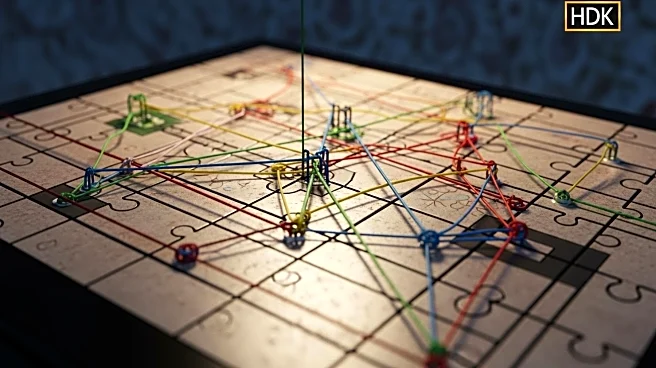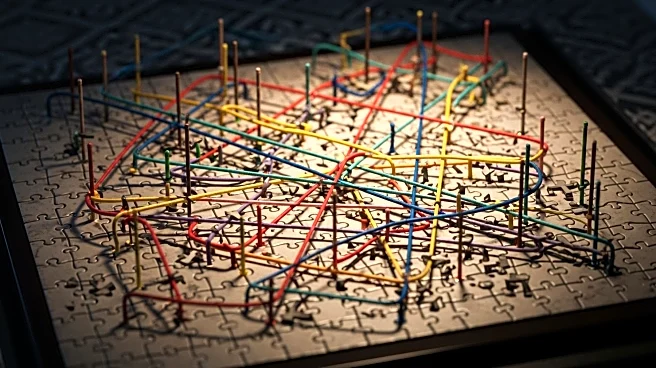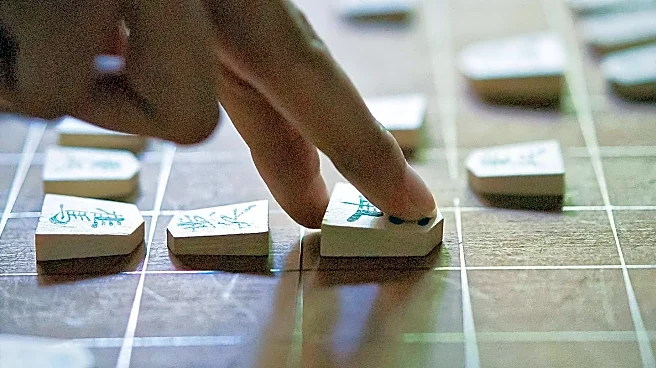What's Happening?
The New York Times Strands puzzle for October 12, 2025, presents a theme titled 'Follow Suit,' challenging players to unscramble words related to card games. The puzzle requires participants to find hidden words that fit the theme, with the ultimate goal of uncovering a spangram—a theme word that spans the entire puzzle. The nonspangram answers include card game terms such as WHIST, BRIDGE, EUCHRE, SPADES, PINOCHLE, and HEARTS. The spangram for this puzzle is 'TRICKTAKING,' which players can locate by following specific clues within the puzzle layout. The Strands puzzle is part of a series of daily puzzles offered by the New York Times, including Wordle, Connections, and Mini Crossword.
Why It's Important?
The Strands puzzle, along with other daily puzzles from the New York Times, provides a mental challenge and entertainment for puzzle enthusiasts. These puzzles are designed to engage users in critical thinking and problem-solving, offering a break from daily routines and a chance to improve cognitive skills. The popularity of such puzzles reflects a growing interest in brain games and their potential benefits for mental health and acuity. As puzzles like Strands continue to evolve, they contribute to the cultural landscape by fostering community engagement and intellectual stimulation.
What's Next?
As the New York Times continues to offer daily puzzles, players can expect new themes and challenges that test their vocabulary and problem-solving abilities. The Strands puzzle, in particular, may introduce more complex themes and word arrangements, encouraging players to expand their linguistic skills. Puzzle enthusiasts can look forward to upcoming editions that may incorporate diverse topics and innovative formats, keeping the experience fresh and engaging. The ongoing development of these puzzles will likely attract a broader audience, enhancing their role in daily entertainment and mental exercise.
Beyond the Headlines
The Strands puzzle and similar games highlight the intersection of entertainment and cognitive development. They offer a platform for individuals to engage in leisure activities that also promote mental agility. The cultural significance of such puzzles lies in their ability to bring people together, whether through shared challenges or competitive play. As digital platforms continue to expand, puzzles like Strands may integrate more interactive elements, fostering a sense of community among players worldwide. This evolution could lead to new opportunities for collaboration and social interaction within the puzzle-solving community.












